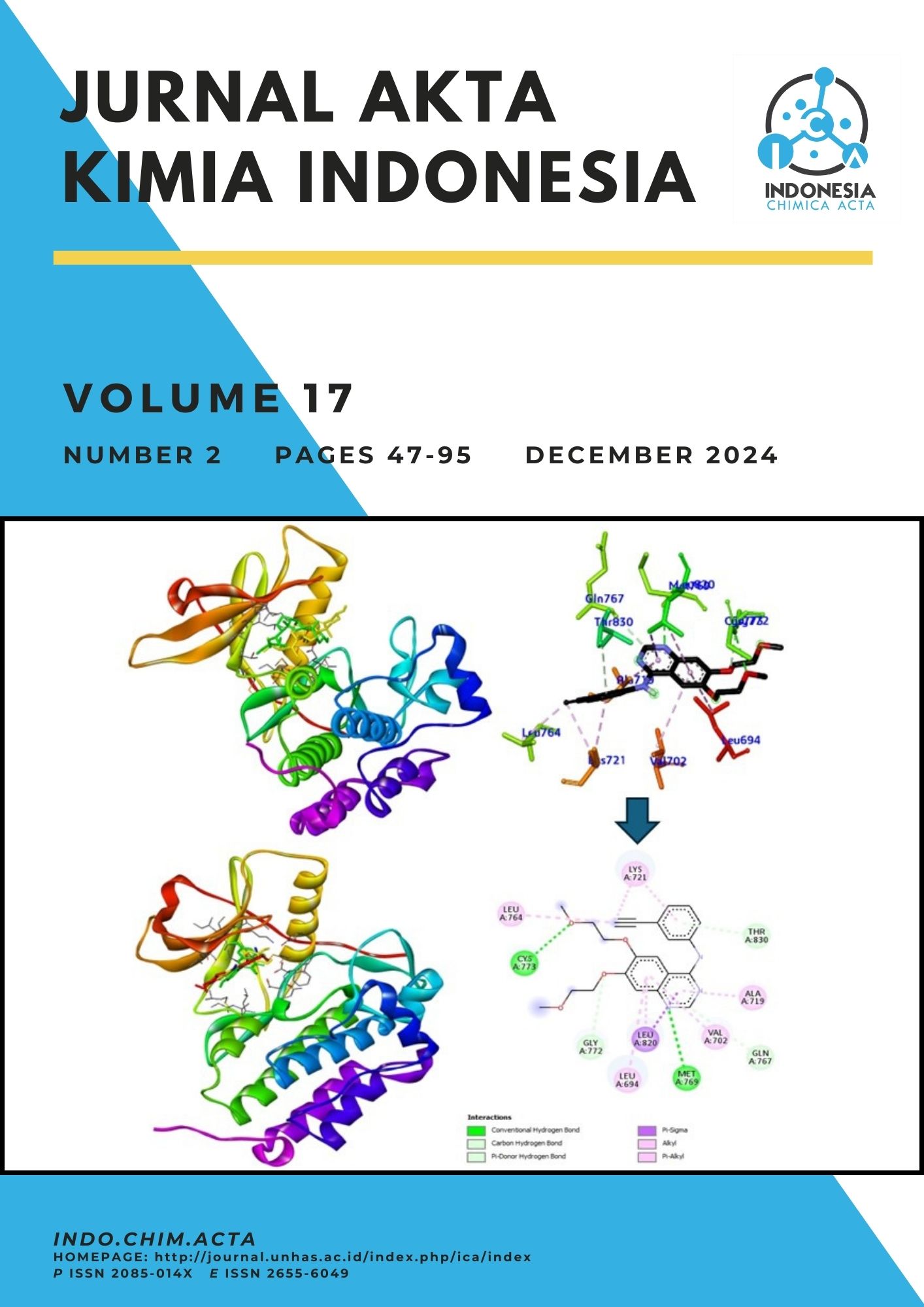Synthesis of Gold (Au) Nanoparticles by using Bioreductor of Cocoa (Theobroma cacao L.) Rind Extract and It's Antibacterial Activity Test
Abstract
Research on the Synthesis of Gold (Au) Nanoparticles by using Bioreductor
of Cocoa (Theobroma cacao L.) Rind Extract and Its Antibacterial Activity Test has been
done. This Green Synthesis method uses methanol as a solvent to extract organic
compounds in the cocoa rind that function as bioreductants. The results of the synthesis
were continued by testing its activity as an antibacterial. The form of gold nanoparticles
can be confirmed after 30 minutes of stirring. The characterization of gold nanoparticles
was carried out using a UV-Vis spectrophotometer, Fourier Transform Infrared (FTIR),
X-Ray Diffraction (XRD), and Scanning Electron Microscopy-Energy Dispersive X-Ray
(SEM-EDX). Based on the analysis of UV-Vis spectrophotometer, the maximum
wavelength was at 553 nm with an absorbance value of 0.164. The FTIR results indicate
the presence of a hydroxyl group that acts as a metal ion reducing agent so that it is not
charged, while the results of the XRD analysis confirm that the gold nanoparticle crystals
are Face Centered Cubic (FCC) and based on the Scherrer approach the particle size
distribution has an average diameter of 6.303 nm. The SEM-EDX results showed that
the gold nanoparticles had a spherical shape and were located in the M electron shell.
The gold nanoparticles had an inhibitory zone of 8.9 mm in Pseudomonas aeruginosa
and 7.6 mm in Bacillus subtilis bacteria.
Authors
Copyright (c) 2024 Fabriani Sabir, Abdur Rahman Arief, Syahruddin Kasim

This work is licensed under a Creative Commons Attribution-ShareAlike 4.0 International License.
This is an open access journal which means that all contents is freely available without charge to the user or his/her institution. Users are allowed to read, download, copy, distribute, print, search, or link to the full texts of the articles in this journal without asking prior permission from the publisher or the author.
Jurnal Akta Kimia Indonesia (Indonesia Chimica Acta) operates a CC BY-SA 4.0 © license for journal papers. Copyright remains with the author, but Jurnal Akta Kimia Indonesia (Indonesia Chimica Acta) is licensed to publish the paper, and the author agrees to make the article available with the CC BY-SA 4.0 license. Reproduction as another journal article in whole or in part would be plagiarism. Jurnal Akta Kimia Indonesia (Indonesia Chimica Acta) reserves all rights except those granted in this copyright notice.

